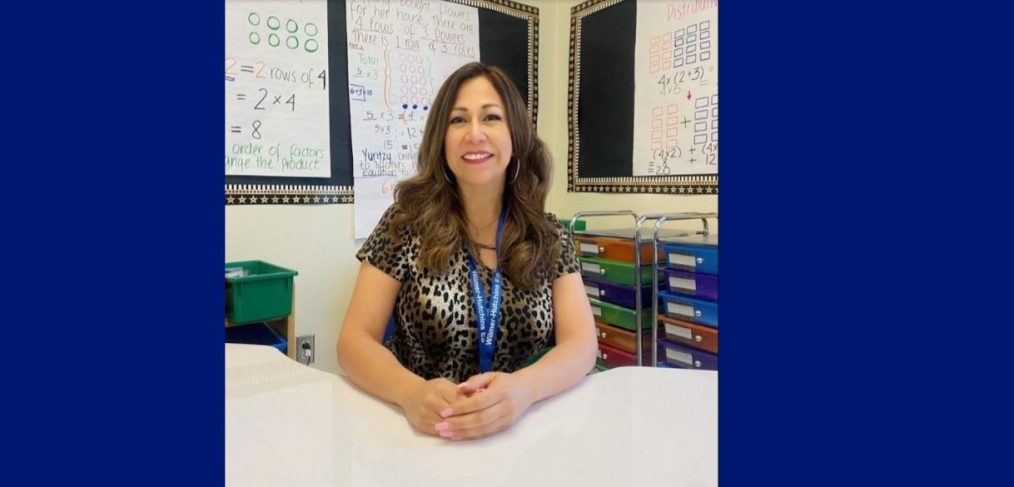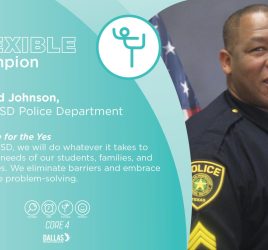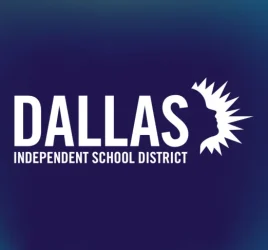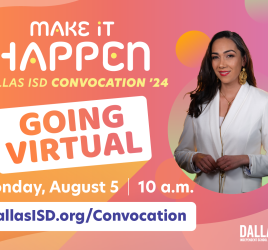
Master Teachers: A series
Sandra Urton, a teacher at Wilmer Hutchins Elementary School, first came to work as a teacher when she heard of the district’s need for bilingual educators. Urton saw this as an opportunity to make a positive impact for youth in the community.
Now in her 15th year teaching in the district, she had previously taught two years in the state of Quintana Roo, Mexico, at the Universidad Tecnológica de Cancún, as well as in a middle school and at a language school.
Where are you from and how did you end up at Dallas ISD?
I am from Mexico City. I decided to work at Dallas ISD because I heard its need for bilingual educators, and I wanted to impact the community positively.
What drew you to education?
Before entering education, I worked in a French geophysics firm, Compagnie Generale de Geophysique, CGG.’ I was a legal advisor in charge of reviewing bids and contracts between the company and Mexico’s state-run oil company, Pemex, writing and translating legal and technical documents in French, English, and Spanish. Then, I moved to the state of Quintana Roo, Mexico, where I realized that some kids were without someone who could help them make good choices. I saw too many teens and young adults struggling with the party atmosphere of the area. They didn’t have anyone motivating them to think about their future, despite having the opportunity to do so. I realized there was a lack of role models, and I immediately understood that I wanted to be that person who could help them become successful, the one who could help them discover their talents and help them believe in themselves. I wanted to be the person who makes a difference in their lives and who would impact their future positively, therefore, I started counseling them. Later, I became a middle school teacher and part-time college professor, and, not long after, I heard of Dallas ISD’s need for bilingual teachers. I packed a bag and moved to Dallas to start teaching at Dallas ISD.
How are you creating opportunities for students?
First of all, I take the time to know my students, and learn about what they like to do, so I can plan and create meaningful and effective learning opportunities for them. Once I know my students, I self-reflect and think of ways to reach their fullest potential. I build language and social skills along with content knowledge. I want my students to become global citizens, so I create activities where students can collaborate and engage with their peers. I pair and group them strategically, so that they can support each other and grow together. This is a powerful tool for active learning. Collaboration is a skill that will follow them throughout their lives, fostering inclusion and community empowerment. When working in groups, students learn how to interact socially and the importance of their voices being heard. I create opportunities that allow them to connect their experiences with the content to construct knowledge.
Involving students’ cultural perspectives, experiences, and identities into the classroom creates a more inclusive and relevant learning environment. I recognize the importance of acknowledging and respecting students’ cultural identities and using them as valuable resources for teaching and learning. I create opportunities for students to become lifelong learners and independent thinkers through different approaches, such as real-world applications and blended learning activities.
I foster students’ curiosity, to become innovative critical thinkers and problem solvers. I am aware of the importance of checking for understanding, so I ask students to paraphrase and monitor their own learning and justify their thinking so that misconceptions can be addressed early. I create opportunities to grow and set goals, therefore I implement constructive and timely feedback.
As a bilingual teacher, I create language acquisition opportunities to develop oral competency in two languages and promote biliteracy, biculturalism, and bilingualism through the implementation of research-based strategies.
My students’ responses provide me with information that I use to make effective instructional decisions. I use this data as a tool to increase and drive instruction. When students make connections with the real world, they engage in their own learning. Self-reflection is also a powerful learning opportunity for my students to construct knowledge.
What is your best teaching tip?
Provide students with experiences that promote deep understanding and thinking. I also provide clear instructions and communicate the expectations to avoid confusion and promote a focused learning atmosphere. Engage students with open-ended questions and then challenge them to think more deeply. Always ask students to justify their answers to make thinking visible and to enhance their learning experiences. Be aware of the diversity of the students and take the time to explore their background knowledge. Another tip is to create safe environments where students can experience positive feelings so they can associate them through their learning journeys. Making content comprehensible to students, using visuals, and collaborative strategies to help all students create meaning is an effective tip for all learners.
Creating positive relationships in the classroom and building strong teacher-student relationships are important. A safe environment is crucial for students to learn and to allow themselves to take academic risks. Always provide constructive feedback. Students need to know how to improve every day and we need to set goals with them and celebrate when they achieve them. Always tell students that what they are learning is important and explain why. All voices are important in the classroom. Promote listening skills and taking turns, as a leadership skill that will allow them to help their communities in the future. Good instruction is essential and must be accompanied by differentiated techniques to allow all students access to content and accommodate it to their diverse abilities and to their diverse language proficiency levels.
Remember to stay current in the field of education, learn about new research-based strategies that have been proven to be effective, and share them with other educators. Don’t forget to involve parents in the learning process of their children. And finally, the most important tip is to have fun and enjoy what you do every day, students need to feel that we are there to help them become successful.
What would your students be surprised to find out about you?
My students would be surprised to find out that my bachelor’s degree is in law, and that I speak four languages: French, Italian, English, and Spanish. They will also be surprised to find out that when I moved to Dallas, I arrived with only one suitcase and that I started from scratch in the Dallas ISD Alternative Certification program. They will also be surprised to find out that at the beginning, I was very scared, because I was in a new country without knowing anybody in the program and not having anything but my dreams and a passion to impact lives.
What inspires you the most about being an educator?
Knowing that students have acquired the social-emotional and academic content and that they have learned lifelong and global skills that will follow them for the rest of their lives is what inspires me. It also inspires me to know that I have impacted them positively.



